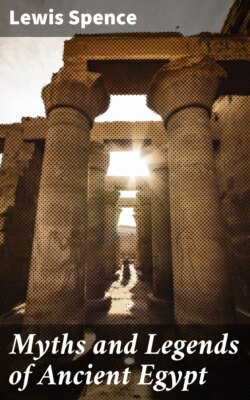Читать книгу Myths and Legends of Ancient Egypt - Lewis Spence - Страница 45
На сайте Литреса книга снята с продажи.
Osiris
ОглавлениеOne of the principal figures in the Egyptian pantheon, and one whose elements it is most difficult to disentangle, is Osiris, or As-ar. The oldest and most simple form of the name is expressed by two hieroglyphics representing a throne and an eye. These, however, cast but little light on the meaning of the name. Even the later Egyptians themselves were ignorant of its derivation, for we find that they thought it meant 'the Strength of the Eye'—that is, the strength of the sun-god, Ra. The second syllable of the name, ar, may, however, be in some manner connected with Ra, as we shall see later. In dynastic times Osiris was regarded as god of the dead and the under-world. Indeed, he occupied the same position in that sphere as Ra did in the land of the living. We must also recollect that the realm of the under-world was the realm of night.
The origins of Osiris are extremely obscure. We cannot glean from the texts when or where he first began to be worshipped, but that his cult is greatly more ancient than any text is certain. The earliest dynastic centres of his worship were Abydos and Mendes. He is perhaps represented on a mace-head of Narmer found at Hieraconpolis, and on a wooden plaque of the reign of Udy-mu (Den) or Hesepti, the fifth king of the First Dynasty, who is figured as dancing before him. This shows that a centre of Osiris-worship existed at Abydos during the First Dynasty. But allusions in the Pyramid Texts give us to understand that prior to this shrines had been raised to Osiris in various parts of the Nile country. As has been outlined in the chapter on the Book of the Dead, Osiris dwells peaceably in the underworld with the justified, judging the souls of the departed as they appear before him. This paradise was known as Aaru, which, it is important to note, although situated in the under-world, was originally thought to be in the sky.
Osiris is usually figured as wrapped in mummy bandages and wearing the white cone-shaped crown of the South, yet Dr. Budge says of him: "Everything which the texts of all periods record concerning him goes to show that he was an indigenous god of North-east Africa, and that his home and origin were possibly Libyan." In any case, we may take it that Osiris was genuinely African in origin, and that he was indigenous to the soil of the Dark Continent. Brugsch and Sir Gaston Maspero both regarded him as a water-god,[1] and thought that he represented the creative and nutritive powers of the Nile stream in general, and of the inundation in particular. This theory is agreed to by Dr. Budge, but if Osiris is a god of the Nile alone, why import him from the Libyan desert, which boasts of no rivers? River-gods do not as a rule emanate from regions of sand. Before proceeding further it will be well to relate the myth of Osiris.
